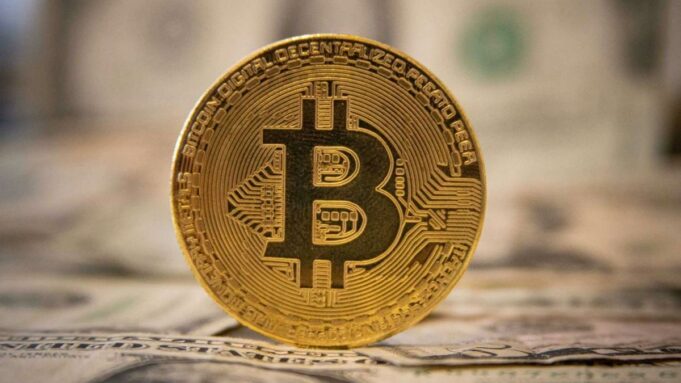Positioned at the forefront of the dynamic cryptocurrency landscape emerges as an ingenious online trading platform, wielding significant influence within the realm of the world’s premier cryptocurrency. At the heart of its sophisticated supply management lies a captivating mechanism—the halving event—unfolding approximately every four years. This pivotal occurrence orchestrates a precise reduction, halving the reward designated for mining nascent blocks. The repercussions of this intricate process reverberate widely, intricately interweaving into the intricate tapestry of Bitcoin’s supply dynamics and its corresponding market valuation. As such, a compelling imperative arises to meticulously decipher the multifaceted nuances intrinsic to this phenomenon, drawing us into the depths of its profound implications. Explore https://chain-reaction-trading.com/ to get started with your Bitcoin trading adventure, where you may create an account and perform successful trades regardless of your trading expertise.
Understanding the Bitcoin Halving
In order to fully grasp the implications of the halving event, it is imperative to delve into the fundamental process of Bitcoin creation. At its core, Bitcoin functions within the framework of blockchain technology, a decentralized ledger where miners engage in the intricate task of deciphering intricate mathematical puzzles to authenticate transactions and seamlessly integrate fresh blocks into the blockchain. As an incentive for their rigorous computational efforts, miners are granted a specific quantity of Bitcoins, thus underpinning the cryptocurrency’s distribution mechanism.
However, Satoshi Nakamoto, Bitcoin’s pseudonymous creator, designed the system with a deflationary aspect. Every 210,000 blocks (approximately every four years), the reward for mining a block is halved. This event is known as ‘Bitcoin halving’. The last halving occurred in May 2020, reducing the reward from 12.5 to 6.25 Bitcoins. The next one, expected around 2024, will further reduce it to 3.125 Bitcoins.
Impact on Bitcoin’s Supply
The occurrence of the halving event exerts a direct and discernible influence on the overarching supply dynamics of Bitcoin. As this event triggers a reduction in the reward allocated to mining activities, a consequent deceleration in the rate of new Bitcoin creation transpires. This measured deceleration serves as a pivotal factor in curbing the expansion of the existing supply, effectively heightening Bitcoin’s inherent scarcity, thereby further shaping the intricacies of its market behavior and valuation.
However, it’s worth noting that halving doesn’t mean the total supply of Bitcoin is reduced. Instead, it affects the rate of new Bitcoin entering the market. The total supply of Bitcoin is capped at 21 million coins, a limit set by Nakamoto. The halving event ensures that the final Bitcoin won’t be mined until around 2140.
Effect on Bitcoin’s Value
The halving event holds the potential to exert a profound and discernible impact on the valuation of Bitcoin. Drawing from the foundational tenets of supply and demand within economic theory, this event assumes a pivotal role wherein a reduction in the available supply, coupled with a constant or burgeoning demand, imparts a compelling impetus for price escalation. The resultant interplay of these factors intertwines intricately to mold Bitcoin’s market dynamics, often leading to notable shifts in its value that reverberate across the broader cryptocurrency landscape.
Historically, Bitcoin’s price has seen significant growth following each halving event. For instance, after the 2016 halving, Bitcoin’s price surged from around $650 to almost $20,000 in December 2017. Similarly, following the 2020 halving, Bitcoin reached an all-time high of over $60,000 in April 2021.
However, it’s important to remember that while halving can influence Bitcoin’s price, it’s not the only determining factor. Other factors, such as market sentiment, regulatory news, technological advancements, and macroeconomic trends, also play a role in Bitcoin’s price movements.
Looking Ahead
Bitcoin’s halving is a fascinating aspect of its protocol that showcases the cryptocurrency’s deflationary nature. While it has historically been associated with a surge in price, it’s crucial to remember that investing in cryptocurrencies carries risk, given their volatility and the influence of external factors on their value.
With the imminent approach of the forthcoming halving event, a watchful gaze from both investors and fervent enthusiasts is poised upon the horizon, poised to scrutinize the intricate interplay between this event and the nuanced realms of Bitcoin’s supply and valuation. While the potential for instigating another fervent surge in market activity remains uncertain, the unequivocal certainty emerges that the halving event remains an enduring linchpin within Bitcoin’s overarching economic framework. Its recurring role continues to cast a spotlight on the cryptocurrency’s inherent scarcity, accentuating its potential prowess as a robust store of value—a narrative that threads its way through the dynamic tapestry of Bitcoin’s evolving significance within the broader financial landscape.


















